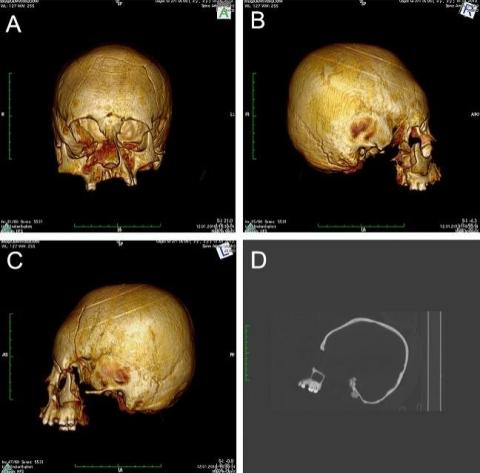In a new study, genetic, isotopic and skeletal analysis of three human skeletons dating to 415-560 AD excavated from the Hermanov vinograd archaeological site in Osijek Croatia revealed that all were males between 12 and 16 years of age at death and that they all suffered from malnutrition.
They are not obviously of different social status, but genetic analysis found that the two with cranial modifications exhibited very distinct ancestries, one from the Near East and the other from East Asia.

CT scans of the so called circular-erect type cranial deformation. Image: M Kavka
The authors suggest the ACD observed here may have functioned to distinguish members of different cultural groups as these groups interacted closely during the Migration Period. From the evidence at hand, it is unclear if these individuals were associated with Huns, Ostrogoths, or another population. It is also unclear whether the use of ACD to signify cultural identity was a widespread practice or something peculiar to these individuals.



Comments